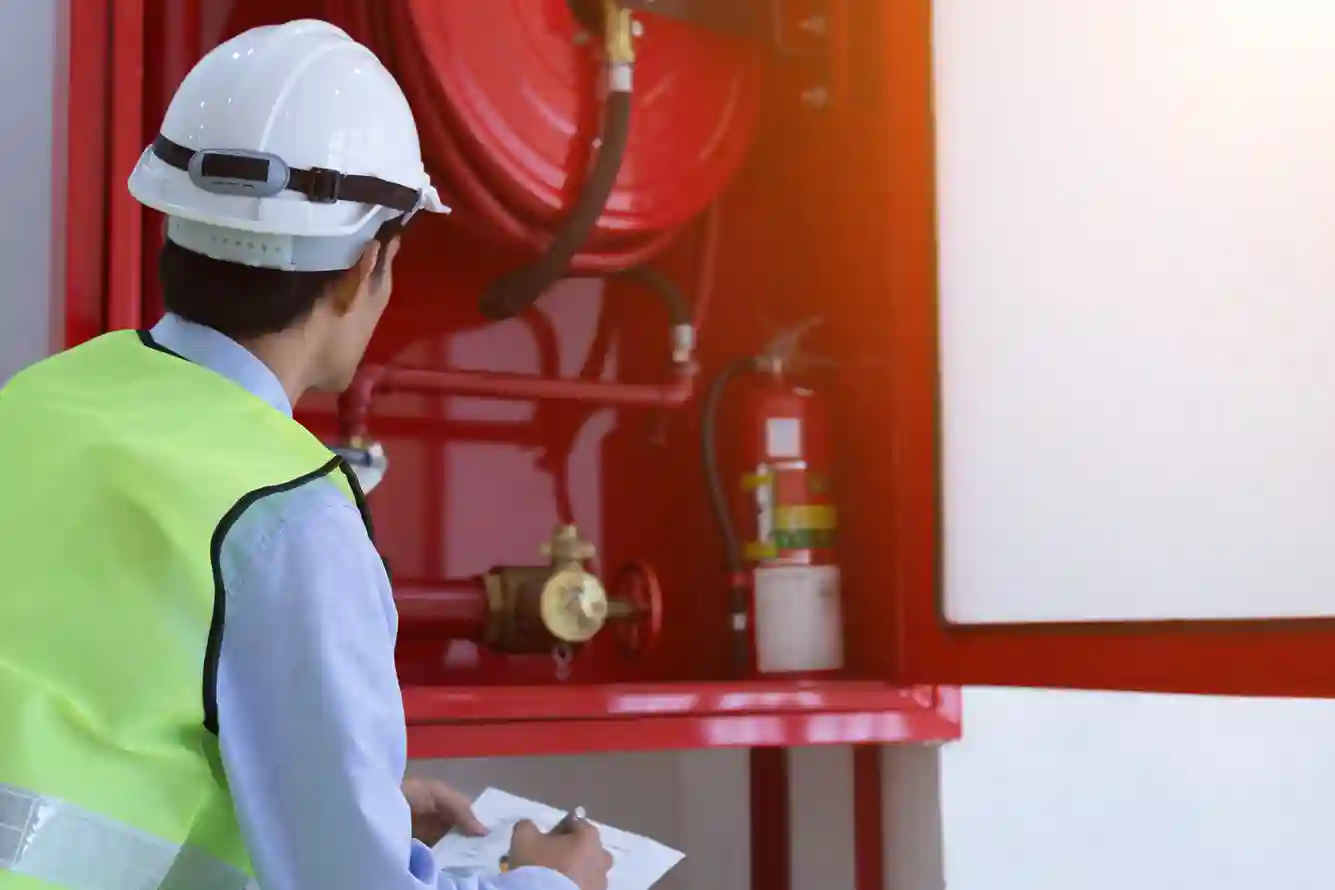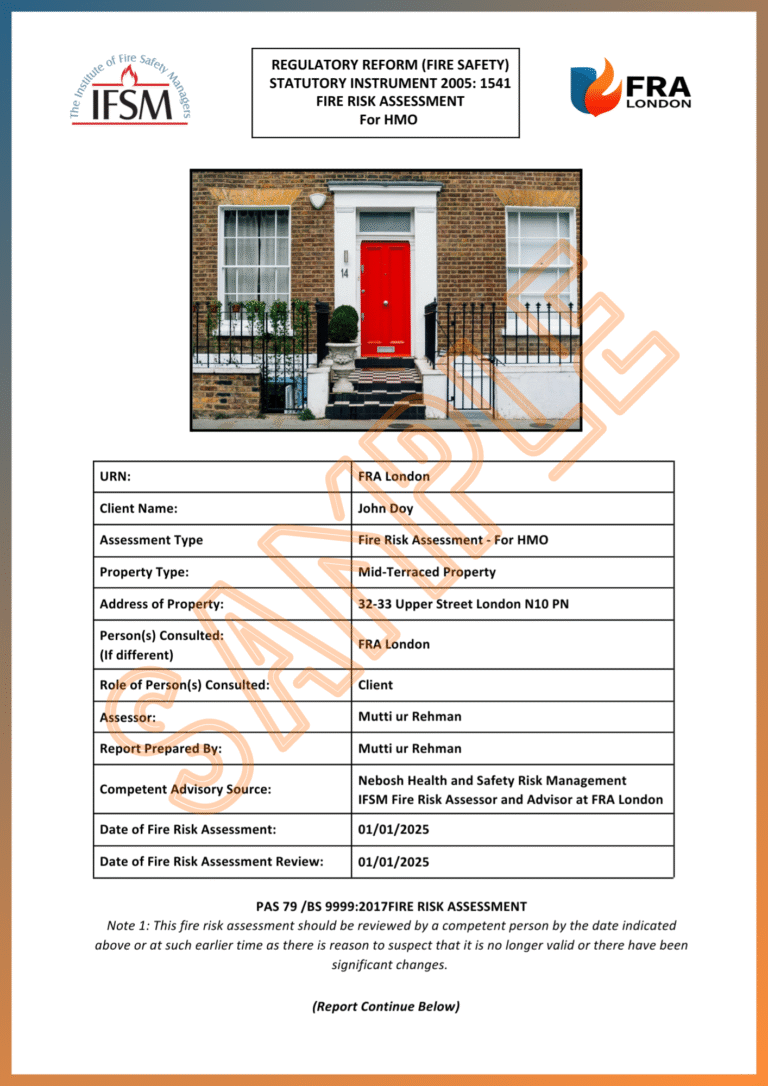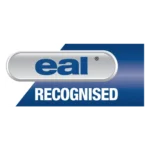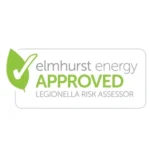Fire Risk
Assessment London
A fire risk assessment is a process for identifying potential hazards in buildings. It examines areas like fire detection systems, fire hazards, and fire layout. By identifying risks, fire assessments help property owners and building managers implement safety measures. This minimises safety measures and ensures the safety of occupants.
Affordable Pricing
Prices may vary depending on your property address, congestion, and parking charges.
Residential Prices
Studio Flate – £79.00
Single Communal Area – £109.00
Two Communal Areas – £149.00
Three Communal Areas – £179.00
HMO & Rental Homes 1-3 Bedrooms – £149.00
HMO & Rental Homes 4-6 Bedrooms – £179.00
Commercial Prices
Business Sector Up to 100 sq meter – £159.00
Business Sector Up to 200 sq meter – £199.00
Business Sector Up to 300 sq meter – £249.00
Business Sector Up to 500 sq meter – £349.00
Business Sector Up to 750 sq meter – £449.00
Business Sector Up to 1000 sq meter – £599.00
Services We Offer
Types of Fire Risk Assessments
At FRA London, we provide tailored fire risk assessments for different types of properties, ensuring safety and compliance with regulations.
Residential Fire Risk Assessment
We assess fire safety in residential properties, focusing on escape routes, alarms, electrical systems, and fire prevention to protect residents and ensure safety.
Commercial Fire Risk Assessment
Our commercial assessments evaluate workplace fire hazards, safety measures, and emergency procedures, ensuring compliance with regulations and protecting employees, visitors, and clients.
HMO Fire Risk Assessment
We conduct fire risk assessments for HMOs, examining communal areas, fire detection systems, and evacuation routes, ensuring tenant safety and regulatory compliance.
Fire Risk Assessment for Blocks of Flats
We assess fire safety in multi-occupancy buildings, focusing on escape routes, alarms, fire-resistant materials, and overall building safety to protect all residents.
What Does a Fire Risk Assessment Include?

Regulatory Compliance
Ensuring regulatory compliance is at the heart of our fire risk assessments. We adhere to the latest fire safety regulations, including the Fire Safety Act 2021 and the Regulatory Reform (Fire Safety) Order 2005. These regulations require that all premises, whether residential or commercial, are regularly assessed for fire risks and that appropriate measures are taken to protect occupants. Our assessments help ensure that your property meets all necessary legal requirements, minimising the risk of fire hazards and keeping your business or home safe and compliant with current laws.

Why Choose Us?
Experienced and Accredited Fire Risk Assessors
Our team of fully accredited assessors has significant expertise conducting fire risk assessments for various property types to ensure compliance with UK requirements.
Fast Turnaround for Reports
We provide rapid, trustworthy services with next-day or 48-hour report delivery, guaranteeing that your fire safety needs are met without delay.
Fully Insured and Qualified Professionals
Due to their complete insurance and certification, our specialists may be sure that the evaluation procedure will be completed to a high standard and with peace of mind.
Serving London and Surrounding Areas
We provide fire risk assessment services in London and the surrounding areas, guaranteeing prompt response times and local knowledge.
Tailored Solutions for Various Property Types (Residential, Commercial, HMO, Industrial)
Regardless of the property type—residential, commercial, HMO, or industrial—we offer customised fire protection solutions that satisfy your needs.






Accreditation & Certification
At FRA London, we take immense pride in adhering to the highest standards within the fire safety industry. Our team’s expertise and dedication to fire safety excellence are highlighted through our registration with several respected organizations, including the Institute of Fire Safety Managers (IFSM), NAPIT, EAL Recognised, NEBOSH, UK Fire Door Training (UKFDT), and City & Guilds.
These affiliations reflect our commitment to maintaining the highest levels of professional competence, technical skill, and regulatory compliance. By aligning closely with these recognized bodies, we ensure our services not only meet but exceed essential safety standards, providing our clients with the peace of mind that their fire safety needs are in trusted hands.
At FRA London, we continuously update our knowledge and refine our skills to stay ahead in the rapidly evolving fire safety landscape, positioning ourselves as a trusted partner for businesses and property owners.
Legal Obligations: Who Needs a Fire Risk Assessment?
Commercial Property Owners and Managers
Legally, all commercial buildings must have a fire risk assessment to guarantee fire safety compliance and safeguard both workers and clients.
Residential Landlords (Including HMO)
Regular fire risk assessments are necessary for landlords, especially those in charge of Houses in Multiple Occupation (HMO) properties, to protect tenants and fulfil regulatory requirements.
Business Owners with Premises
To comply with fire safety rules, each business owner operating from a physical premise, such as offices, stores, or restaurants, must have a valid fire risk assessment.
Contractors and Those in Control of Premises
Facilities managers and other contractors in charge of non-domestic properties are accountable for ensuring the completion of fire risk assessments.
Special Requirements (CQC, OFSTED, Property Sales)
A fire risk assessment may be required by law for homes being sold, as well as for buildings governed by the CQC and OFSTED. These properties are subject to special restrictions.
Geographical Breakdown of London’s Districts
Frequently Asked Questions (FAQs)
What is the Fire Risk Assessment Process?
The process includes an initial consultation, a site inspection by qualified assessors, a thorough report of findings, and suggestions to enhance fire safety. Periodic evaluations guarantee continued compliance.
How Often Do I Need a Fire Risk Assessment?
A fire risk assessment should be reassessed every year, or any time there are major modifications to the structure, use, or occupancy of the building.
What Are the Penalties for Non-Compliance?
Infractions of fire safety standards may result in imprisonment and fines of up to £5,000 for small infractions or indefinite fines for major infractions.
How Much Does a Fire Risk Assessment Cost?
Depending on the size, complexity, and risk considerations of the property, the price might vary from £150 to £900. For larger or multi-site properties, the prices are higher.
How to Do a Fire Risk Assessment UK?
To conduct a fire risk assessment in the UK, follow these steps: identify fire hazards (sources of ignition, fuel, and oxygen), identify people at risk, evaluate and reduce risks (implement control measures), record findings, prepare an emergency plan, and provide training. Regularly review and update the assessment to ensure ongoing compliance with fire safety regulations. This process helps minimize fire risks, ensures occupant safety, and meets legal obligations under the Regulatory Reform (Fire Safety) Order 2005. Professional fire risk assessors can provide a comprehensive, compliant assessment if required.
What Are the 4 Types of Fire Risk Assessment?
The four main types of fire risk assessments are:
-
Type 1: Non-invasive assessment of common areas only.
-
Type 2: Non-invasive assessment of common areas plus some sample flats.
-
Type 3: Comprehensive assessment, including common areas and all flats (non-invasive).
-
Type 4: In-depth assessment of common areas and flats, including invasive inspections to assess hidden fire risks.
Choosing the appropriate type depends on the building’s complexity, occupancy, and potential fire hazards, ensuring effective risk management and legal compliance.
What Are the 5 Main Components of a Fire Risk Assessment?
The five main components of a fire risk assessment are:
-
Identify Fire Hazards: Sources of ignition, fuel, and oxygen.
-
Identify People at Risk: Occupants, visitors, and those with mobility issues.
-
Evaluate and Reduce Risks: Implement fire safety measures to control hazards.
-
Record, Plan, and Train: Document findings, create an emergency plan, and train staff.
-
Review and Update: Regularly revisit the assessment to reflect changes in the environment or occupancy.
This systematic approach helps reduce fire risks and improve safety.
What is the Legal Requirement for Fire Risk Assessments in the UK?
In the UK, fire risk assessments are a legal requirement under the Regulatory Reform (Fire Safety) Order 2005. Responsible persons, such as business owners, landlords, and property managers, must conduct regular fire risk assessments to identify and mitigate fire hazards, protect occupants, and ensure safe evacuation. This includes maintaining fire safety equipment, clear escape routes, and proper staff training. Non-compliance can lead to fines, legal action, or imprisonment, making regular assessments essential for legal and safety compliance.
What Are the 5 Stages of Fire Safety Risk Assessment?
The five stages of a fire safety risk assessment are:
-
Identify Hazards: Recognize fire sources and potential fuel.
-
Identify People at Risk: Consider occupants and vulnerable individuals.
-
Evaluate and Reduce Risks: Implement measures to reduce fire hazards.
-
Record, Plan, and Train: Document findings, create evacuation plans, and train staff.
-
Review and Update: Regularly reassess to ensure ongoing safety.
Following these steps helps create a safer environment and ensures compliance with fire safety regulations.
TESTIMONIALS
Get a Free Quote
Get your fire risk assessment from FRA London right now! To evaluate your property and give the best solutions for your needs, we conduct a free consultation with one of our fire safety specialists. To receive a customised price, just fill out our contact form with your name, phone number, and kind of property.
For prompt assistance or to arrange an evaluation, please email at info@fralondon.co.uk or call us. Contact us right now to make sure your property complies with safety regulations!


